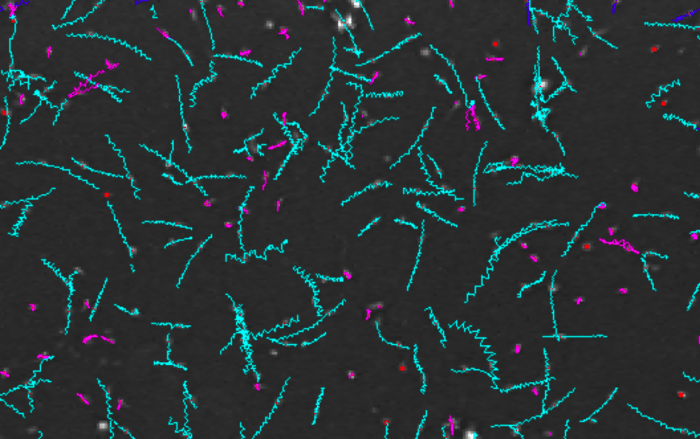
Use of pharmaceutical medications by humans is escalating globally. In fact, the number of pharmaceutical doses dispensed per year is predicted to reach 4.5 trillion by 2020, an increase of 24% from 2015 levels, with this trend being driven by a growing and aging human population, as well as greater access to healthcare across emerging markets (IMS, 2015).
This rise in demand for pharmaceuticals has, consequently, resulted in an increase in the quantity and diversity of pharmaceutical pollutants being discharged into the environment. Indeed, over 600 different pharmaceutical substances have now been detected in the environment worldwide (Küster and Adler, 2014), across 71 countries spanning all continents (aus der Beek et al., 2016).
So, given that pharmaceuticals are typically designed to have biological effects at low doses, could their presence in the environment potentially be affecting ecological and evolutionary processes in wildlife? To answer this question, new research led by Monash University Ph.D. candidate Michael Bertram (Behavioural Ecology Research Group), and conducted in collaboration with a multidisciplinary team of researchers from Monash University and Macquarie University in Australia, as well as Åbo Akademi University in Finland, investigated impacts of exposure of fish to one of the world’s most common pharmaceutical pollutants, fluoxetine (the active ingredient in Prozac).
Fish on Prozac
After human patients ingest and excrete fluoxetine, this antidepressant drug makes its way into aquatic habitats mainly due to inadequate removal during wastewater treatment processes. Once present in the environment, fluoxetine can cause a wide range of adverse effects in aquatic species, including disrupting development and reproduction and altering morphological and physiological traits. What’s more, given that fluoxetine is prescribed to treat psychiatric disorders in humans, recent research has focused on its potential to influence behaviour in wildlife. This work has revealed that exposure to fluoxetine can, for example, impair learning and memory retention in the common cuttlefish and increase abnormal swimming behaviour in guppies.
Despite these new findings, we currently know relatively little about how fluoxetine exposure at environmentally realistic concentrations might influence reproductive behaviour in vertebrate wildlife, which is surprising given the fundamental role of reproductive processes in the ecology of individuals and in the evolution of populations and species. Accordingly, Bertram and colleagues conducted a series of laboratory-based experiments testing impacts of exposure to field-realistic concentrations of fluoxetine on reproductive processes in male Eastern mosquitofish.
Male fish were first exposed to fluoxetine for 30 days at two field-realistic levels (“low” and “high”) using large-scale aquarium systems before being assessed for mating behaviour performed towards a female, as well as sperm quality and quantity. These tests revealed, for the first time, that exposure to fluoxetine at levels consistent with those reported in the environment can disrupt both male reproductive behaviour and sperm production in fish. Specifically, in one-on-one mating trials, males in the high-fluoxetine treatment performed more frequent copulatory behaviour towards females than did males in the unexposed treatment.
Interestingly, however, male reproductive behaviour was not disrupted by fluoxetine exposure when in the presence of a rival male, suggesting interacting effects of fluoxetine exposure and male competition. Further, males exposed to fluoxetine at both the low and high levels were found to have elevated sperm counts relative to unexposed males, while sperm swimming performance was not significantly affected. Lastly, reduced body condition was seen in males exposed to fluoxetine at the lower level.

Sperm performance and total sperm count were tested in fish exposed to fluoxetine. Here, computer-assisted sperm analysis (CASA) software is being used to assess sperm swimming performance (each sperm cell’s path is represented with a coloured line). Photo credit: Michael Bertram.
From the lab to the field
How are fluoxetine-induced changes in male reproductive behaviour seen in the laboratory expected to manifest in wild fish populations? The answer boils down to one key fact: altered behaviours, especially mating behaviour, can have drastic implications for organismal fitness, as well as ecosystem dynamics and evolutionary processes. This is because the ability of animals to appropriately perform reproductive behaviours plays a crucial role in determining which individuals can successfully reproduce.
Given that males in the high-fluoxetine exposure treatment performed increased copulatory behaviour towards females and were also found to have increased sperm counts, this would suggest that, in nature, males inhabiting contaminated habitats may be more successful at securing fertilisations. However, given the complexity of natural systems, this possibility requires further investigation. For example, in mosquitofish, females have been shown to actively avoid males performing excessive copulation attempts, meaning that any potential increase in reproductive fitness in contaminated males is likely to be contingent on their ability to appropriately adjust their behaviour to suit their environment.
Taken together, these findings highlight the potential for widespread pharmaceutical pollutants to disrupt key traits and behaviours in wildlife at exposure concentrations reflecting those present in the environment. Given the increasing pressure on wildlife and ecosystems from chemical pollution — including contaminants of emerging concern, such as pharmaceuticals — this research demonstrates the importance of considering ecologically meaningful sub-lethal endpoints in assessing the risks posed by these contaminants.
These findings are described in the article entitled The antidepressant fluoxetine alters mechanisms of pre- and post-copulatory sexual selection in the eastern mosquitofish (Gambusia holbrooki), recently published in the journal Environmental Pollution. This work was conducted by Michael G. Bertram, Tiarne E. Ecker, Bob B.M. Wong, Moira K. O’Bryan and Jake M. Martin from Monash University, John B. Baumgartner from Macquarie University, and Minna Saaristo who is affiliated with both Monash University and Åbo Akademi University. More information on similar research can be found at http://www.bobwonglab.org/
References:
- Aitken, M., Kleinrock, M., 2015. Global medicines use in 2020: outlook and implications. IMS Institute for healthcare informatics, Parsippany.
- Aus der Beek, T., Weber, F.A., Bergmann, A., Hickmann, S., Ebert, I., Hein, A., Kuster, A., 2016. Pharmaceuticals in the environment—Global occurrences and perspectives. Environ. Toxicol. Chem. 35, 823–835. https://onlinelibrary.wiley.com/action/cookieAbsent
- Küster, A., Adler, N., 2014. Pharmaceuticals in the environment: scientific evidence of risks and its regulation. Philos. Trans. R. Soc. Lond., B, Biol. Sci. 369, 20130587. https://royalsocietypublishing.org/action/cookieAbsent









